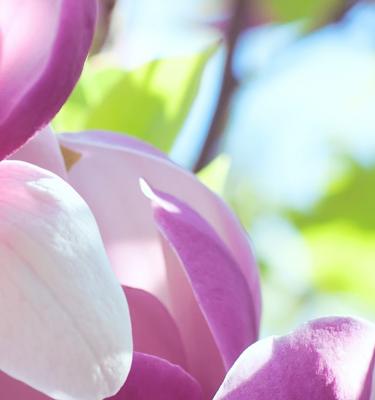

The Ultimate Guide to Growing Magnolias in Pots or in the Garden
Magnolia's magnificent blooms arrive at the end of winter, announcing that spring isn’t far away. On deciduous magnolias their white, pink, purple, dark pink or soft yellow flowers appear before the leaves - so the blooms take pride of place. Evergreen magnolias, however, keep their dark green, glossy foliage year round and bear white or off-white flowers throughout spring and summer.
Many of the new cultivars of magnolia have fragrant flowers in big cupped, bowl or goblet shapes. Magnolias prefer a temperate climate in full sun to part shade position with protection from hot afternoon sun and strong winds. Magnolias come in a range of sizes from the small and compact dwarf cultivars to large majestic feature trees - so choose one to suit your garden.
5 top tips for growing magnolias
- Choose a full sun protected from the hot afternoon sun, strong winds and harsh frosts. Some species and cultivars of magnolia are more tolerant of part shade.
- Magnolias need a rich, moist, free draining and slightly acidic soil to thrive
- Smaller magnolias will happily grow in pots, just use a suitable potting mix like Scotts Osmocote® Premium Potting Mix and choose a pot with good drainage
- Fertilise magnolias 2-3 times a year with Scotts Osmocote® Plus Organics Roses, Gardenias & Azaleas Plant Food & Soil Improver
- During dry weather keep magnolias well watered
Essential shopping list for growing magnolias
- Magnolia plant
- Scotts Osmocote® Plus Organics Roses, Gardenias & Azaleas Plant Food & Soil Improver
- Scotts Osmocote® Compost Premium Soil Improver
- Garden Shovel
- If growing in pots, you’ll need Scotts Osmocote® Premium Potting Mix + Scotts Osmocote® Controlled Release Fertiliser: Roses, Gardenias, Azaleas & Camellias and a suitable pot or container
- Mulch
- Defender™ Pyrethrum Insect Spray
Preparation
Magnolias need full sun to part shade position, sheltered from hot afternoon sun and strong winds. Magnolias prefer a moist, but free-draining soil that’s slightly acidic.
Prepare the soil for planting magnolias by mixing Scotts Osmocote® Compost Premium Soil Improver and Scotts Osmocote® Plus Organics Roses, Gardenias & Azaleas Plant Food & Soil Improver through the soil in your chosen area.
Growing magnolias in the garden
Plant your magnolia into prepared soil - dig the hole twice as wide as the original pot and at the same depth. Gently remove the magnolia from the nursery pot and tease the roots lightly if they are compact.
Plant into the hole and backfill around the plant. Water in well and keep the soil moist for the first few weeks after planting to help establish new roots.
Mulch around the drip zone of magnolias to retain moisture and suppress weeds, but keep the mulch away from the main stem.
Growing magnolias in pots
Magnolias can be grown in large pots or planters with good drainage - choose a pot that’s at least 2 to 3 times bigger than the original nursery pot. Select a dwarf-growing magnolia tree, suitable for growing in pots.
Fill your pot or planter with Scotts Osmocote® Premium Potting Mix. Gently remove the magnolia from the nursery pot and tease the roots lightly if they are compact. Plant the magnolia into the potting mix and backfill around the plant. Water in well and mulch over the surface of the potting mix to help retain moisture, but keep the mulch back from the plants main stems.
Keep the potting mix moist, but not soggy and make sure your new magnolia receives plenty of water during hot and dry summers.
Magnolia fertiliser & care
Magnolias will benefit from fertilising 2-3 times per year in spring, summer and autumn with Scotts Osmocote® Plus Organics Roses, Gardenias & Azaleas Plant Food & Soil Improver or if you’re growing in pots use Scotts Osmocote® Controlled Release Fertiliser: Roses, Gardenias, Azaleas & Camellias.
Magnolias don’t need any special pruning or regular maintenance. Evergreen magnolias can be clipped to shape their growth as needed or desired. Deciduous magnolias only need to have any dead, damaged or crossing branches removed as needed.
Common magnolia pests & diseases
Both evergreen and deciduous magnolias are pretty pest and disease-resistant. They are shallow rooted though, so avoid planting directly beneath them and make sure the whole drip zone of the plant is mulched well to keep the roots cool and moist at all times.
Regular watering during the hot and dry summer months will keep your magnolia thriving.




